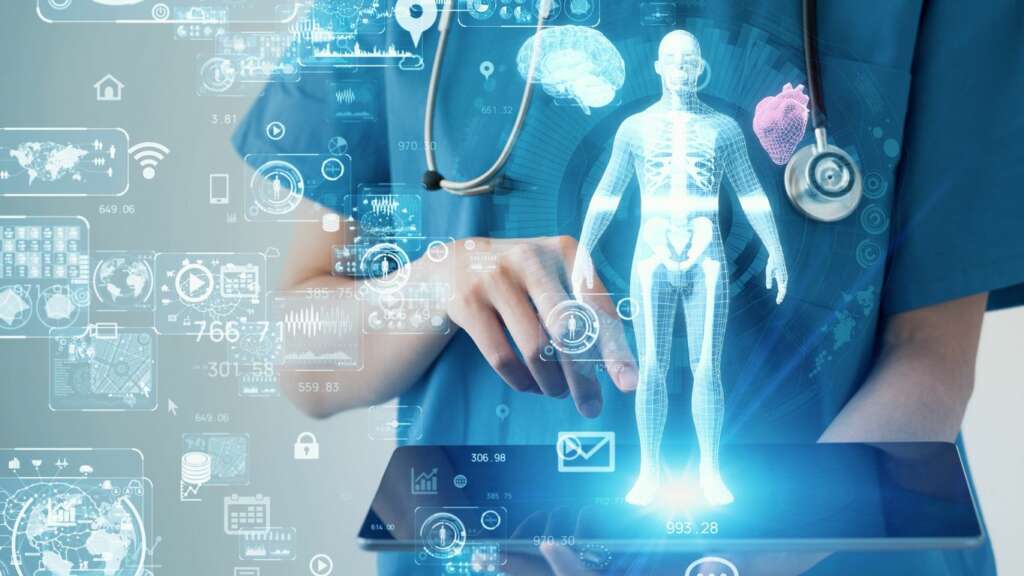
By Andrew Loveless, Chief Revenue Officer, Navenio
A startling 6.73 million people in England were waiting for routine NHS treatment in August 2022. This was the highest number of patients waiting for routine care since records began in August 2007. Unfortunately, it looks as though this will continue to rise, so much so that the new Health Secretary has prioritised the backlog as part of her new four step ‘ABCD’ plan to fix the ailing NHS. Labelling ambulance, backlogs, care, and doctors and dentists are top of the list.
More staff is needed to tackle the backlog, but the ever growing waiting lists are causing strain and intensified pressure on workers. A vicious cycle is developing. So, the news that the UK Department of Health and Social Care is launching its plan for a digital revolution to help with Covid backlogs was certainly welcomed.
On top of this, the deployment of digital technology will help free up hospital beds and clinicians time and in many cases improve outcomes. For example, an estimated further 500,000 people could be better cared for by March next year through remote monitoring technology.
Efficiency, productivity, and workforce stress levels now matter more than ever. Whether that be a NHS worker taking the time to care for a patient, or for the right patient being in the right place at the right time to receive the appropriate treatment. This is where Real Time Location Services (RTLS) are essential.
RTLS programmes can improve productivity by up to 94% in hospital tasks and reduce bed turnaround time by 35%. RTLS can help move people quickly and efficiently by improving patient flow. From discharging patients more quickly to getting beds changed, to finding assets, reducing patient waiting times, improving patient care, supporting clinical staff in a hospital environment and tracking assets globally, the potential of mapping the indoor world is endless.
Right person, right place, right time
The best way to improve efficiency in a healthcare environment is by having the right person in the right place, at the right time. This not only helps with the efficiency of tasks but reduces pressure on teams, improves hospital flow and most importantly, saves lives.
Crowdsourced data from phones, which are carried by hospital staff moving around the hospital, is sufficient to provide location information. Having a solution which supports the last known position of both workforce and assets allows for effective scheduling based on proximity, priority, availability, status and skill set. All of this ensures that not only is the best person for the job allocated the task, but also the best person who is in proximity to ensure efficiency of tasks completed.
Healthcare is a complex system of systems. It is an environment where bottlenecks and delays in one area can have a knock on effect elsewhere. The wealth of analytics and statistics on task progression is used as input for aligning demand with capacity and mitigating hospital backlogs due to Covid. A 40% faster response time to said tasks was seen in settings where RTLS had been implemented. The ability for tasks to be completed quicker, by the right people, in the right places, at the right time, helps to address the backlog caused by Covid.
Supporting NHS staff
Throughout the pandemic the pressure on NHS staff was inimaginable. This pressure has not disappeared, but is now being felt from the record breaking backlog. RTLS is helping to alleviate some of this pressure.
The technology is easy to integrate with other technologies to support optimal workflow. The most effective workflow allows for workers to have more time to complete tasks without losing valuable time due to inefficient organisation.
It also allows for tasks to be completed by the most appropriate person. RTLS has shown to reduce non-clinical tasks done by clinical staff. This allows for the expertise of clinical staff to be used effectively and as efficiently as possible in situations that need it.
More time and effective use of expertise takes pressure off NHS staff by allowing more time to care for patients and make sure that every healthcare resource is optimised.
Prioritising patient care
Hospitals that put RTLS in place found that after implementing its technology workers had a 31% increase in the capacity to handle more tasks. As we have also seen, RTLS allows for tasks to be given to the appropriate people and to be completed more often and at a quicker rate.
Shorter waiting times are experienced due to the increase in task completion and efficiency. The more patients getting seen by the appropriate people allows for treatment to be given to patients.
Time is an invaluable commodity within healthcare. The more time given back to staff, the more patients can be treated and cared for and at a higher standard. Ultimately, it’s one way to help reduce the growing backlog of patients who need care.


